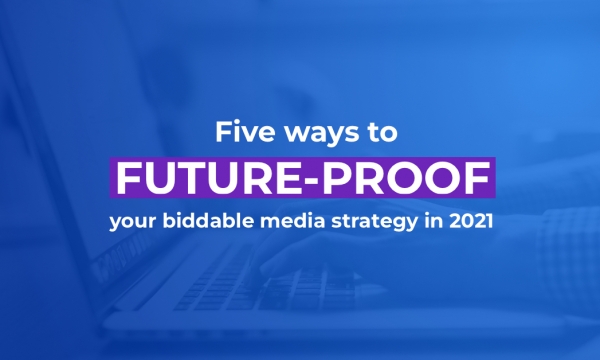With some media and marketing agencies claiming that some brands are moving as much as 60% of their Google advertising budgets towards Amazon, just how big a player is the retail giant in the digital advertising space, and why does it seem to becoming more dominant?
US news network CNBC surveyed six of America’s leading media agencies earlier this month and found one particular trend in common – that all six of them had clients who were moving large proportions of their Google advertising budget into Amazon. In some cases, that proportion was as much as 60%.
But why is that, and is it something that more brands need to be looking at?
Is Amazon becoming a major player in the advertising market?

It is perhaps important to put a little context here because, whilst Amazon is certainly seeing major growth for its advertising platform, Google remains a dominant force.
Google’s parent company Alphabet generated $95.4bn in advertising revenue last year, around $42bn of which revenue comes from the US, to give it a 37% share of digital ad budgets according to eMarketer. Whilst the company does not break down its revenue sources, estimates suggest that 83% of that comes from search ads, with the rest coming from products such as Google Display Network and YouTube advertising.
By comparison, Facebook generated $23bn in the US, giving it a 20.6% market share.
Amazon, on the other hand, is expected to make $4.61bn this year in the US according to eMarketer, giving it a 4.1% market share – a figure that puts it ahead of Microsoft, but still some way behind Google and Facebook.
However, those figures don’t necessarily tell the full story, with major players in the industry noting that whilst Amazon may be a relatively small part of the market today, its rate of growth is notable.
Amazon’s ad sales are forecast to grow between 10-12% this year and at the company’s Q2 earnings announcement this year, Amazon’s CFO Brian Olsavsky called advertising a “multibillion-dollar business” for the company, adding that it had “hundreds of thousands of emerging and established advertisers” using the platform.
Those comments seem to echo the media agency industry’s observations – more advertisers spending more on Amazon.
So what is the industry seeing?

Not all brands are moving their focus towards Amazon’s ad platform. The brands that seem attracted to Amazon’s lure are those in the retail and consumer goods sectors. Other categories, particularly the lucrative ad markets such as automotive and travel have been less eager to look to Amazon, but have shown signs of moving their ad spend away from paid search and into other Google properties – with YouTube in particular a particular growth area.
Not all categories of brands are shifting money to Amazon — most of the movement is coming in consumer packaged goods, while huge and lucrative advertising categories such as automotive and travel are not yet moving to Amazon. In addition, while Google search advertising may be flattening, advertisers are moving parts of their ad spend from other media to different Google properties, particularly YouTube.
Why is Amazon growing at such a rate?

Much of this is being driven by consumer trends. Amazon has got to a point where it has effectively become “the Google of retail”, with almost half of all product searches beginning on Amazon, rather than on search engines.
For advertisers, it makes sense to go where the traffic is, and a significant proportion of that traffic is on Amazon.
But performance is another key driver of this change and for ecommerce and retail brands in particular, Amazon’s proposition does seem to be offering value. Joseph McConellouge, from Reprise (an IPG Mediabrands agency along with Stickyeyes), claimed that Amazon was a “better performer, and by a significant margin”, particularly for retail brands, than many other forms of digital media and that the agency is now recommending the platform more frequently for specific clients.
Others cited that Amazon overs a much more seamless user experience for consumers, which means that conversion rates are higher and basket abandonment is lower. Users who click on a Google search ad may need to create a new account, input their card details and think about the delivery of the product – all of which could be factors that prompt a basket abandonment. Through Amazon, consumers already have their details saved, they can expect one-day delivery and there is no need for a new account.
So is this bad news for Google advertising?

Not necessarily. Google remains the dominant ad platform, and as more advertising money goes into digital generally (typically coming out of TV, radio and other more traditional platforms), Google will invariable see ad growth to a certain degree. Google’s ad revenue in the last quarter grew 23.8% year-on-year.
Not everything is sold on Amazon, and Google is investing heavily in both charming those brands that are less likely to be attracted to Amazon because either the product isn’t sold there, or because they prefer to sell directly to the consumer and therefore avoid Amazon’s commission. The search engine is also investing heavily in its ad products, particularly YouTube, and products such as Google Shopping as it looks to address those conversion rate and basket abandonment issues.
But what Amazon offers is a platform that will specifically appeal to advertisers looking to target consumers at specific stages in the customer journey for specific products. Considering that, it’s important that advertisers see Amazon as a way to diversify their ad strategy and to focus on specific audiences at specific stages, rather than as a new channel upon which they would largely replicate their Google or any other media strategy – and dilute the effectiveness of their ads as a result.
As digital ad revenue grows and as attribution and the understanding of ad effectiveness improves, advertisers will think much more strategically about where their ad budgets go. Amazon represents just one of many channels that should be part of a diverse media-buying strategy.


